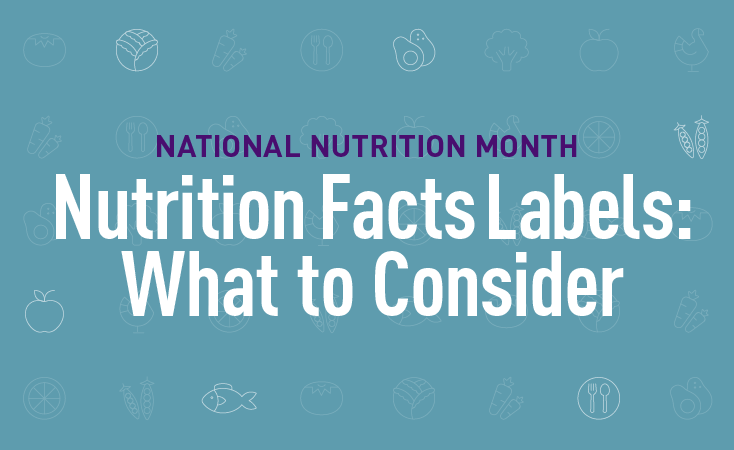
If you have a keen eye, you may have noticed that Nutrition Facts labels on packaged foods have been given an updated look. Though manufacturers have until July 2021 to comply with the new labeling requirements, these updates are designed to help you better understand what exactly you are consuming.
PanCAN caught up with Jeannine Mills, a registered clinical oncology dietitian and member of our Scientific and Medical Advisory Board, to explain these changes and address what pancreatic cancer patients need to know when reading nutritional labels.
According to Jeannine, updates include making the calorie count on a product more visible by listing it in a large and bold font, increasing serving sizes to match what people are actually consuming – think 3/4 of a cup of cereal, rather than 1/2 – and making total sugar information available (the sum of the sugars that are naturally present in the food, as well as the added sugar in food).
This information, as well as the other updates, helps the general public recognize what they are consuming, but what should pancreatic cancer patients consider when reading a nutritional label?
Again, Jeannine is here with a brief overview of some things to consider:
Sugar: Pancreatic cancer patients with diabetes may consider reducing sugars, especially “added sugars,” and the new label is helpful in defining those that occur naturally in a food vs. those that are added in processing or in packaging.
Fat: There may be instances during treatment where you may need to consider grams of fat in a food. Jeannine said, “This would be in the case of dosing pancreatic enzymes where we typically educate patients about adjusting the number of enzymes per meal in consideration of fat as well as volume consumed.”
Fat helps the body to absorb fat soluble vitamins (vitamins A, D, E, K). Fat also provides twice the number of calories per gram as compared to protein and carbohydrate, so it easily contributes to the calorie density of foods when appetite and food intake are lower. Fat in food also provides for taste and texture.
Fiber: Fiber may be adjusted during treatment. For example, one may be advised to follow a lower fiber diet in the first few weeks following surgery, or fiber may need to be adjusted if one feels more reactive to fiber in terms of gas/bloating. Fiber in the diet is helpful in controlling the rapid rise of blood sugar after meals and is also instrumental in regulating bowels.
Please consult your physician regarding any changes to your diet, but if you’d like to get more information about nutrition and pancreatic cancer, you can visit PanCAN’s Diet and Nutrition page or contact PanCAN’s Patient Services.





